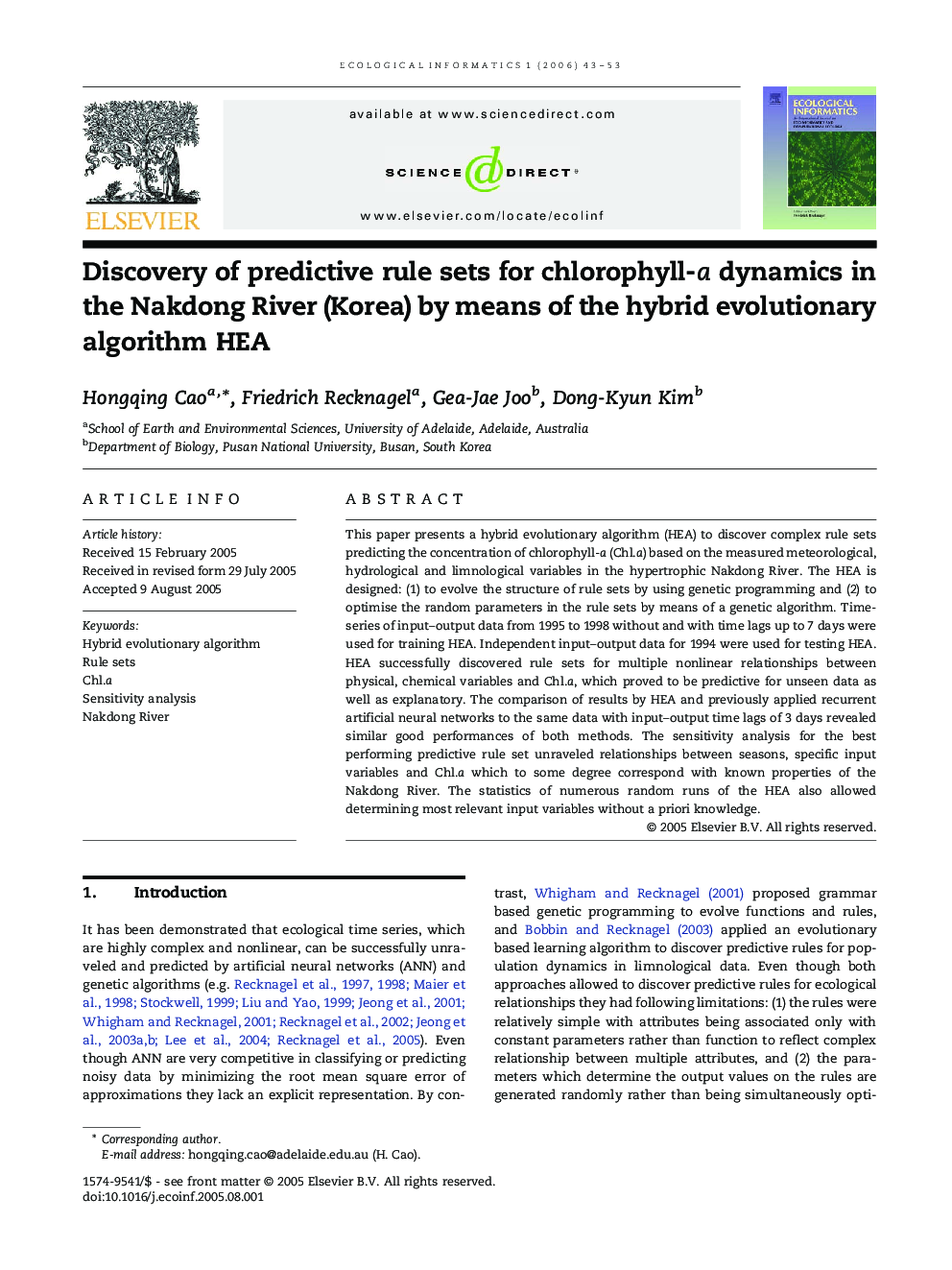| Article ID | Journal | Published Year | Pages | File Type |
|---|---|---|---|---|
| 4375442 | Ecological Informatics | 2006 | 11 Pages |
Abstract
This paper presents a hybrid evolutionary algorithm (HEA) to discover complex rule sets predicting the concentration of chlorophyll-a (Chl.a) based on the measured meteorological, hydrological and limnological variables in the hypertrophic Nakdong River. The HEA is designed: (1) to evolve the structure of rule sets by using genetic programming and (2) to optimise the random parameters in the rule sets by means of a genetic algorithm. Time-series of input-output data from 1995 to 1998 without and with time lags up to 7 days were used for training HEA. Independent input-output data for 1994 were used for testing HEA. HEA successfully discovered rule sets for multiple nonlinear relationships between physical, chemical variables and Chl.a, which proved to be predictive for unseen data as well as explanatory. The comparison of results by HEA and previously applied recurrent artificial neural networks to the same data with input-output time lags of 3 days revealed similar good performances of both methods. The sensitivity analysis for the best performing predictive rule set unraveled relationships between seasons, specific input variables and Chl.a which to some degree correspond with known properties of the Nakdong River. The statistics of numerous random runs of the HEA also allowed determining most relevant input variables without a priori knowledge.
Related Topics
Life Sciences
Agricultural and Biological Sciences
Ecology, Evolution, Behavior and Systematics
Authors
Hongqing Cao, Friedrich Recknagel, Gea-Jae Joo, Dong-Kyun Kim,
